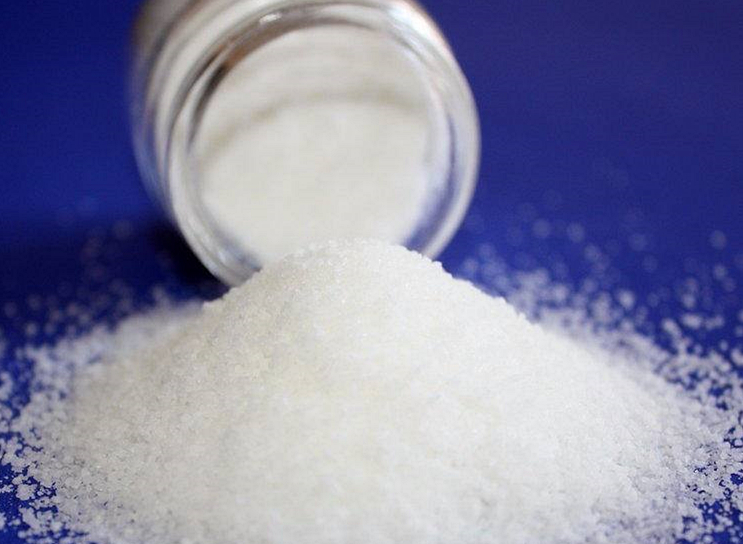
Privacy statement: Your privacy is very important to Us. Our company promises not to disclose your personal information to any external company with out your explicit permission.
Brand:hzhb
Product Information With the development and application of flocculation process, flocculants have been widely and practically used in mineral processing. The flocculant flocculation principle can be divided into chemical flocculation and physical...
Brand:hzhb
Min. Order:1 Bag/Bags
Transportation:Ocean
Product Introduction: The product is an ultra-high molecular weight polymer made from the copolymerization of acrylamide and acrylate. It belongs to Polyacrylamide. Its molecular weight is as high as 30 million or more, and it has extremely strong...
Brand:hzhb
Product Information Exclusive Polyacrylamide Flocculant Dry Powder for Aluminum Oxide In the alumina oxide production process of Bayer method, sintering method or joint method for treating monohydrate stibnite, trihydrate alumina or mixed bauxite,...
Brand:hzhb
Product Information Mineral processing water, washing water with polyacrylamide flocculant introduction, mineral processing water and washing water is relatively simple sewage, mineral processing plant is a big user of water, at the same time,...
Brand:hzhb
Product Information Types of synthetic polymer flocculants and flocculation characteristics At present, widely used in alumina industrial production of flocculants have natural polymer flocculants and synthetic polymer flocculants two categories,...
Brand:hzhb
Product Information Emulsion Polyacrylamide (water-in-oil type) Description: Emulsion Polyacrylamide products for polyacrylamide series monomer polymer, its molecular chain contains a variety of strong and weak more sex genetic factors, it can be...
Brand:hzhb
Product Information The function of Nonionic Polyacrylamide Nonionic polyacrylamide flocculation effect is extremely strong, due to it has: 1.Clarification and purification effect; 2.Sedimentation promotion; 3.Filtration promotion; 4.Thickening and...
Brand:hzhb
Product Information Polyacrylamide is simply divided into anionic polyacrylamide, cationic polyacrylamide and nonionic polyacrylamide. In all walks of life have played their role. Today we will talk about the use of polyacrylamide in the incense...
Brand:hzhb
Product Information Polyacrylamide used as crosslinking agent Crosslinking agent, also known as a bridging agent, is an important part of the polyhydrocarbon photoresist, the photochemical curing of this photoresist, depending on the crosslinking...
Brand:hzhb
Product Information High molecular weight high viscosity Polyacrylamide High molecular weight Polyacrylamide has high viscosity and its aqueous solution has good tolerance to electrolytes. Relatively high molecular weight polyacrylamide molecular...
Brand:hzhb
Product Information Nonionic Polyacrylamide is a water-soluble polymer or polyelectrolyte. Because its molecular chain contains a certain number of polar groups, it can adsorb the suspended solid particles in water, make the bridge between particles...
Brand:hzhb
Product Information Polyacrylamide is a kind of polymer water purification material, which is widely used as water treatment auxiliary in hundreds of industries. Polyacrylamide has a very good water purification effect, it can effectively remove the...
Brand:hzhb
Transportation:Ocean
Product Information Polyacrylamide polymer flocculant has been widely used in the sewage treatment industry. Its use efficiency can be improved by batch dosing, reducing the concentration of configuration, adjusting the pH of sewage and reasonable...
Brand:hzhb
Product Information Paper dispersant: In the papermaking process, the fibers and suspended particles in the pulp need to be dispersed to ensure the quality of the paper. As a dispersant, cationic polyacrylamide can promote the dispersion of these...
USD 1.8 ~ 2.1
Brand:hzhb
Min. Order:1 Bag/Bags
Model No:HZ-1803
Transportation:Ocean
Product Information Retention aid: In the papermaking process, the fibers and impurities in the pulp need to be effectively separated. Cationic polyacrylamide, as a retention aid, can promote the settlement of fibers and separation of impurities...
Brand:hzhb
Transportation:Ocean
Product introduction: At present, the ultra-high molecular weight high viscosity Polyacrylamide particles have gradually become a popular product in the field of thickening and viscosity increasing additives by virtue of the fine powder advantage....
Brand:hzhb
Transportation:Ocean
Characteristics of Anionic Polyacrylamide for incense making: 1. Good adhesive effect: Anionic polyacrylamide has excellent adhesive properties, which can effectively bond the raw materials of incense together, making the resulting incense firmly...
Brand:hzhb
Product Information Anionic polyacrylamide for coal washing Polyacrylamide PAM for coal washing is a more specialized polyacrylamide. In fact, just the internal chemical composition content made a little adjustment. Coal washing with polyacrylamide,...
Brand:hzhb
Product Information With the increasing global demand for mineral resources, the mining industry is facing the challenges of environmental protection and sustainable development while continuously pursuing innovation and progress. In this context,...
Brand:hzhb
Product Information Iron ore wastewater with anionic polyacrylamide treatment effect is good The anionic polyacrylamide products produced by our company are characterized by fast flocculation speed, clear water quality, and low water content of...
Brand:hzhb
Product Information Sand washing slurry special Polyacrylamide its main features are high turbidity, fine particle size of solids, solid particles more negatively charged on the surface, the repulsion between the homogeneous charge so that these...
Brand:hzhb
Product Information Cationic Polyacrylamide adsorption in coal washing wastewater treatment Coal washing wastewater is an important part of the coal industry, with the enhancement of people's awareness of environmental protection, how to effectively...
Brand:hzhb
Product Information Polyacrylamide Emulsion is a kind of viscous liquid formed after solid particles are dissolved in water, which is in the form of emulsion form. Emulsion manufacturing process does not need to go through the process of drying;...
Brand:hzhb
Product Information Emulsion Polyacrylamide can be used in which areas? Emulsion-type polyacrylamide, most customers do not have a comprehensive understanding of it. This product is not only environmentally friendly in production process, but also...





Privacy statement: Your privacy is very important to Us. Our company promises not to disclose your personal information to any external company with out your explicit permission.

Fill in more information so that we can get in touch with you faster
Privacy statement: Your privacy is very important to Us. Our company promises not to disclose your personal information to any external company with out your explicit permission.